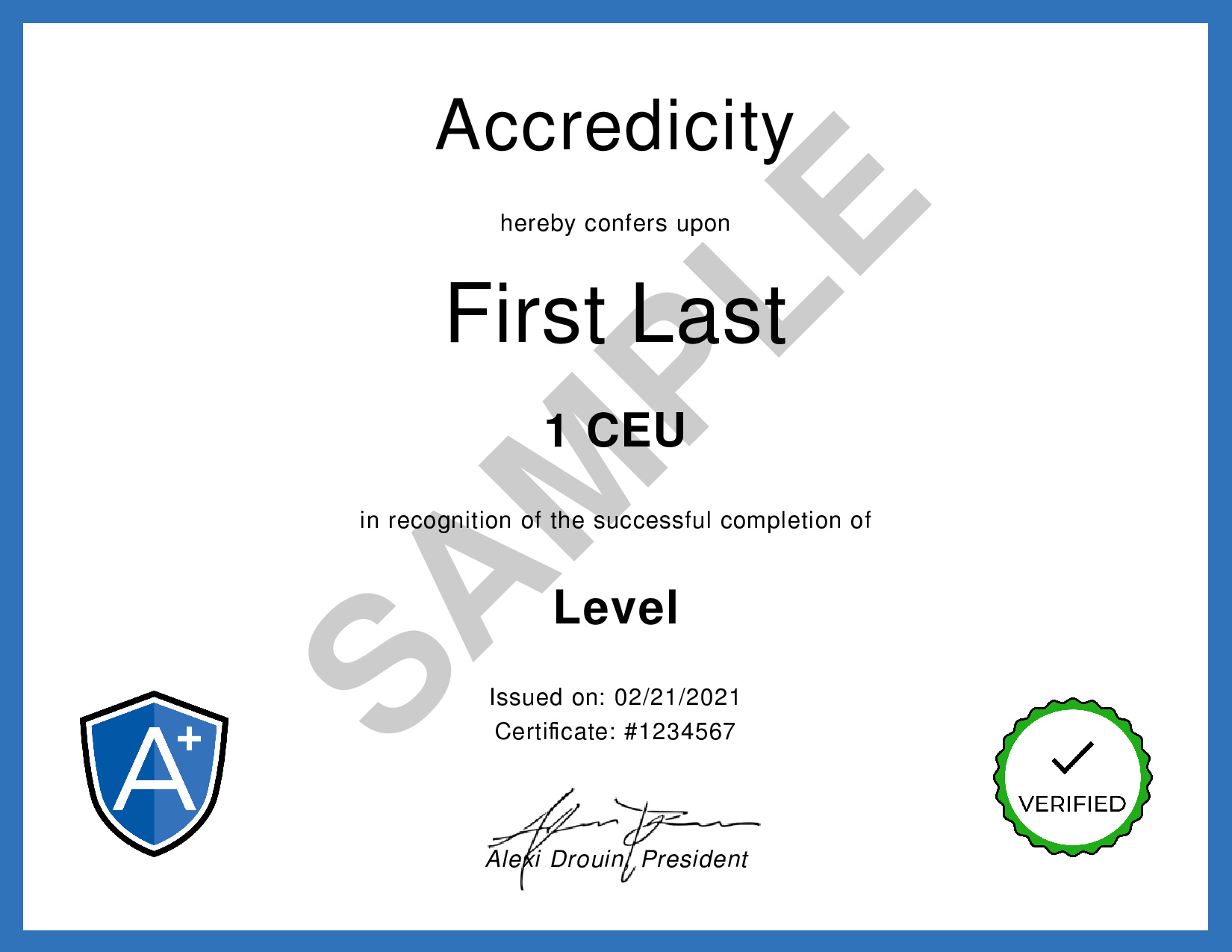How To Build Trust On Your Virtual Team | HBR
Reference: Harvard Business Review. (2020, March 16). How to Build Trust on Your Virtual Team [Video]. YouTube.
We Make Your Education Count

Get the Credit You Deserve and Become the Most Attractive Job Candidate by Earning and Posting A+ Badges to Your Linkedin Profile.
Sign Up to Get Started at Accredicity
|
Discover the keys to fostering trust and collaboration: research-backed tips to build a successful virtual team. Keith Ferrazzi, of Harvard Business Review, explains the importance of building trust on virtual teams and the methods to do so. Firstly, swift trust can be used to establish a team-wide understanding of goals and to create a feeling that everyone is in it together. Secondly, interpersonal trust can be proactively built through making connections. Thirdly, communication should be regular and predictable to ensure everyone is on the same page. Lastly, power should be shared and rotated amongst members to ensure everyone's input is valued. With these strategies, trust can be established and maintained on virtual teams. Learning Outline1. Make the most of swift trust Instructional ContentTrust is essential for virtual teams to function optimally, but it can be difficult to establish and maintain without face-to-face interactions. Fortunately, there are a few key strategies that can help team managers to build and maintain trust with employees on virtual teams. First, take advantage of “swift trust”, which is the feeling that the team is in it together and success or failure affects everyone. This can be accomplished by touting the competence of team members and setting clear goals from the start. Second, ensure that communication is regular and predictable. This helps to create an atmosphere of trust and collaboration, and ensures that people are not left wondering why someone has not responded to a message. Third, share and rotate power. A centralized power structure is less effective in a virtual environment, and research shows that high trust teams have power that shifts among the members depending on the stage of the project. Finally, don’t just hope for the best. Managers should be proactive to ensure that trust grows within the virtual team. By following these strategies, managers can create an environment of trust and collaboration on their virtual teams. Leadership
|

Building trust on a virtual team is like swimming in a pool with a bunch of strangers. You don't know each other and you don't know who to trust. But, with the right tips and tricks, you can make it work! To make sure your virtual team trusts each other, make sure everyone is on the same page with clear goals, get to know each other so you know what each person is capable of, make sure communication is regular and consistent, and take turns sharing power and responsibilities. With these tips, your virtual team will be swimming in trust in no time! Video Quotes"When groups first form, the prevailing feeling is that, hey, we're all in this boat together. Success will reflect well on everyone. Failure is going to hurt all of us." - Keith Ferrazzi "Teams can't function without trust. And of course, we know that trust can be challenging to build without face to face interactions." - Keith Ferrazzi Related Quotes"I think the most important thing for virtual teams is trust." - Heather McGowan, co-author of The Adaptation Advantage "We need to make sure that people that are working together in virtual teams, have the opportunity to get to know each other in a meaningful way." - Dr. Talya Bauer, Professor of Management at Portland State University Competencies1. Integrity and Trust Learning Outcomes1. Understand the concept of swift trust and how it can help build trust within a virtual team (Knowledge) Sample Answers1. I have learned that in order to build trust on a virtual team, it is important to take advantage of swift trust by touting the competence of all team members and setting clear goals. 2. Additionally, I have learned that it is important to proactively build interpersonal trust, communicate with predictability, and share and rotate power to foster trust in a virtual environment. 3. Lastly, I have learned that trust can be challenging to build without face to face interactions, so it is important to be proactive and use the right practices to ensure that trust grows within the virtual team. Keith FerrazziKeith Ferrazzi is an American author and the founder and CEO of Ferrazzi Greenlight, a research-based consulting firm that helps organizations build collaborative cultures. He is a New York Times bestselling author, a former Chief Marketing Officer and a successful entrepreneur. He has authored three books, including Never Eat Alone and Who’s Got Your Back, which have been translated into twenty languages. His research has been featured in The Wall Street Journal, The Harvard Business Review, Fortune, and Fast Company. He is an expert on How to Build Trust on Your Virtual Team due to his expertise in helping organizations build collaborative cultures and his research on the topic. He is affiliated with Ferrazzi Greenlight, which can be found at Ferrazzi Greenlight. AssessmentQ: What is one way to take advantage of swift trust within virtual teams? A. Ensure the team members are well-versed in the project goals. Answer: A QuestionsCommon Hypothetical Questions: 1. What is swift trust and why is it important for virtual teams? Real-Life Application Questions: 1. How can a company create trust on their virtual team when employees have never met in person? KeywordsVirtual Team Trust, Interpersonal Trust, "Swift Trust", "Centralized Power Structure", "Fortune 500 IT", "Virtual Environment", "Face To Face Interactions", "Clear Goals", "Predictable Communication", "Regular Communication", "Rotate Power", "Personal Connections". Facts1. Swift trust is an initial feeling of trust that helps hold the team together until a deeper bond develops. Trends1. Establish an onboarding program: Introduce new members to the virtual team with an onboarding program that includes an introduction to team members, an overview of team goals, and a review of team processes. This will help create a feeling of belonging and establish an understanding of expectations. 2. Utilize video conferencing: Set up a weekly video conferencing session to help build interpersonal trust and relationships within the virtual team. This will provide an opportunity to interact with each other on a more personal level, which is vital to creating trust. 3. Assign team-building tasks: Assign tasks that require collaboration between members of the team. This will help create a sense of unity and common purpose, and will encourage members to trust each other. SourceThis learning instructional guidance was formulated using the GPT-3 language model created by OpenAI. Share#VirtualTeams need trust to succeed. Here's how to build it: Swift Trust, Interpersonal Trust, Predictable Communication & Shared Power. #Leadership #Trust #RemoteWork #Teamwork 😃 @Accredicity |








 13 Creds - Leadership
13 Creds - Leadership



